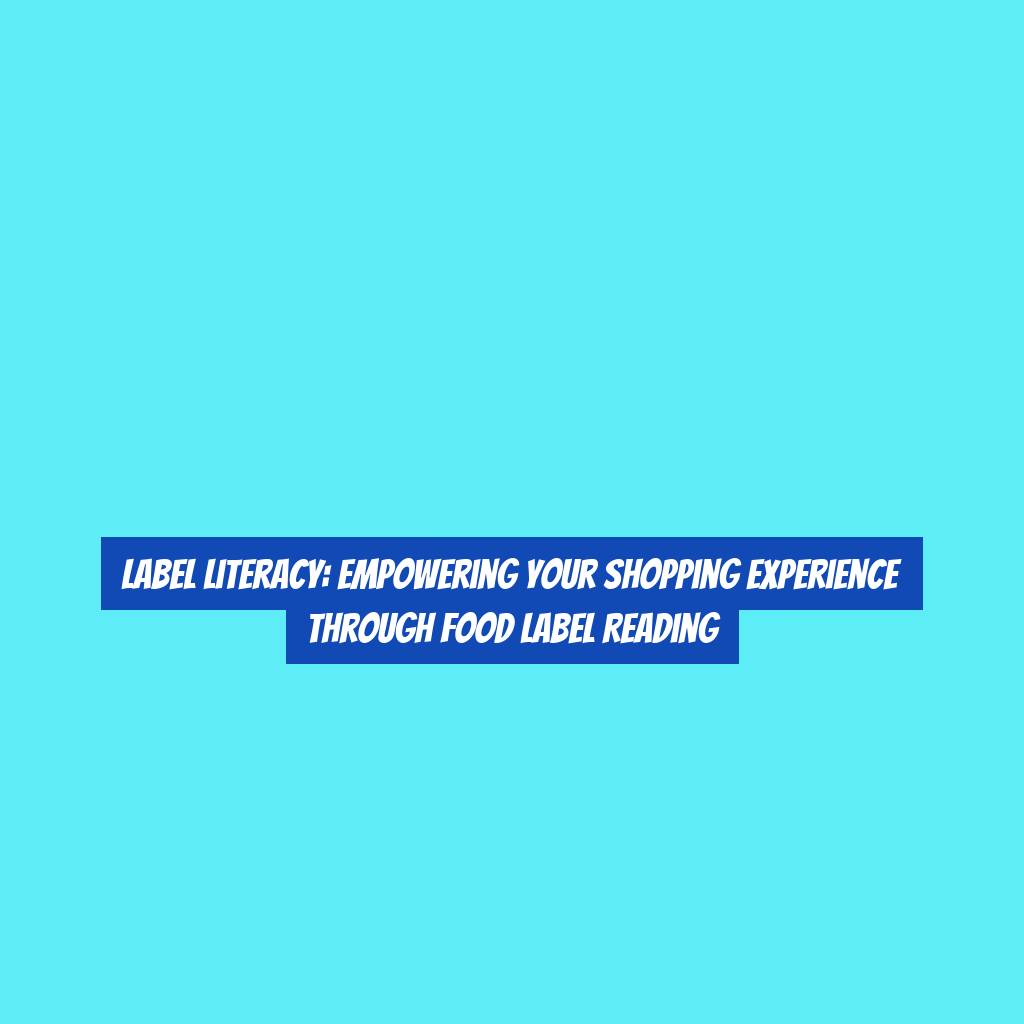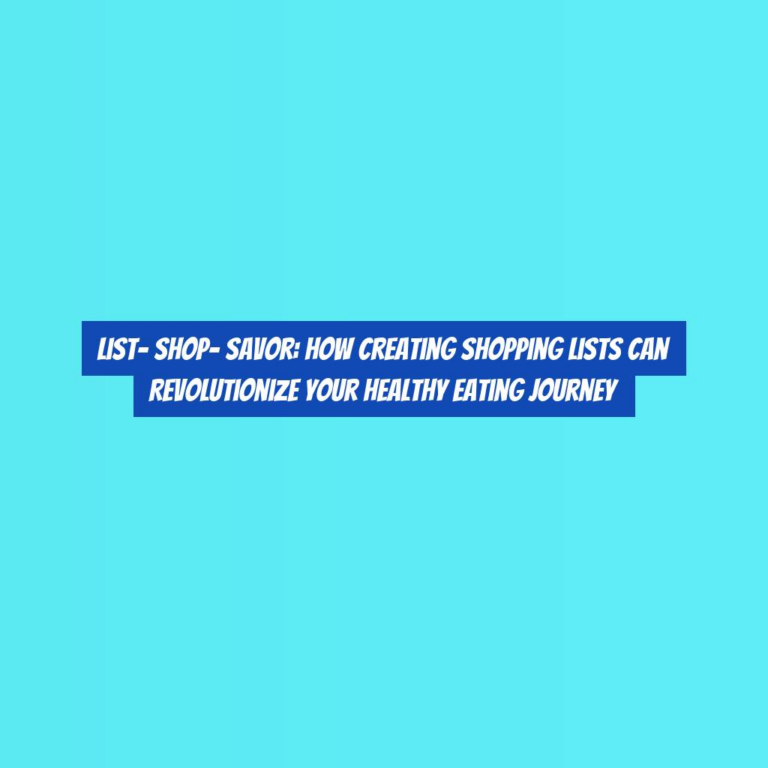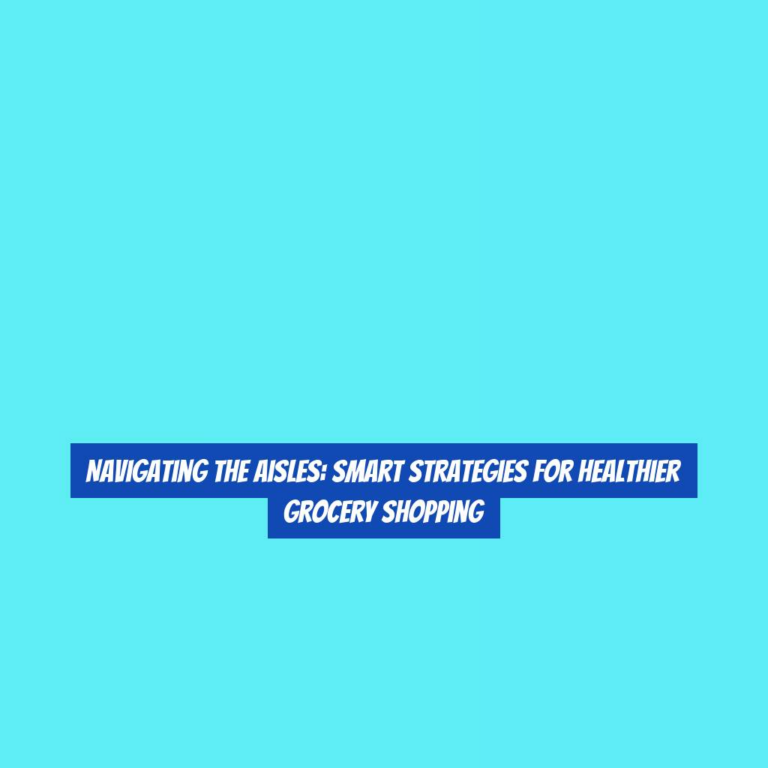Label Literacy: Empowering Your Shopping Experience Through Food Label Reading
When you pick up a box of cereal from the grocery store shelf, do you know what all those numbers and percentages on the nutrition label really mean? Understanding food labels is a crucial skill for making informed choices about the food you eat.
ItG??s not just about counting calories, but also about knowing the ingredients and their potential impact on your health. Being label literate can significantly influence your shopping experience and ultimately, your overall well-being.
So, how can you ensure that youG??re getting the most out of your food label literacy?
Understanding Food Label Basics
To understand food label basics, start by examining the serving size and servings per container listed on the label. The serving size tells you the amount of food that the nutrition information is based on, while the servings per container indicate how many servings are in the entire package. This information is crucial for accurately understanding the nutritional content of the food youG??re consuming.
Once you grasp the serving size and servings per container, you can move on to the next important detail: the calorie count. This tells you how many calories are in one serving of the food. ItG??s essential to keep in mind that if you consume more than one serving, youG??ll need to adjust the calorie count accordingly.
Additionally, pay attention to the nutrients listed on the label, such as fat, cholesterol, sodium, carbohydrates, fiber, sugars, and protein. Understanding these basics will empower you to make informed choices about the foods you eat and contribute to a healthier lifestyle.
Decoding Nutritional Information
Now that you understand the serving size and servings per container, you can analyze the nutritional information to make informed choices about the foods you eat. The nutritional information provides crucial details about the amount of nutrients and potential health benefits or risks associated with the product.
Start by focusing on the serving size and the number of servings per container, ensuring that you adjust your intake accordingly. Then, examine the calories per serving, as this indicates the energy content. Keep in mind that the daily values are based on a 2,000-calorie diet, so your calorie needs may vary.
Next, look at the nutrients to limit, such as saturated fat, sodium, and added sugars, aiming to keep these as low as possible. Conversely, pay attention to the nutrients to encourage, including dietary fiber, vitamins, and minerals, aiming to consume more of these.
Identifying Hidden Ingredients
Understanding the importance of scrutinizing food labels for hidden ingredients is crucial for making informed dietary choices. Many processed foods contain additives, preservatives, and artificial flavors that may not be immediately recognizable. By carefully reading the ingredient list, you can uncover these hidden components and make more conscious decisions about what you consume.
One common hidden ingredient is high-fructose corn syrup, which is often added to sweetened beverages, condiments, and processed snacks. This ingredient has been linked to various health issues, including obesity and diabetes, making it important to be aware of its presence in food products.
Additionally, ingredients like artificial colors and flavors, hydrogenated oils, and excessive sodium can be disguised under different names, making it essential to be vigilant when reading labels. Taking the time to identify these hidden ingredients empowers you to choose foods that align with your health goals and dietary preferences.
As you become more adept at recognizing hidden ingredients, you gain greater control over your food choices and overall well-being.
Navigating Health Claims
Scrutinizing food labels for hidden ingredients has given you the power to make informed dietary choices, and now itG??s time to navigate the maze of health claims on packaged foods.
Health claims on food packaging can be confusing, but understanding them is crucial for making healthy choices. When you see terms like G??low-fat,G?? G??reduced sodium,G?? or G??high fiber,G?? itG??s essential to know what they really mean. G??Low-fatG?? doesnG??t necessarily mean low in calories, and G??reduced sodiumG?? products might still have high levels of sugar or unhealthy fats. Additionally, G??high fiberG?? could mean the product is also high in added sugars.
ItG??s vital to look beyond the health claim and check the entire nutrition label to get the full picture of what youG??re consuming. Some products may even boast about being G??naturalG?? or G??organic,G?? but these terms can be misleading if not verified by looking at the actual ingredients list.
Utilizing Label Literacy in Practice
Start by applying your label literacy skills to evaluate the serving size and the number of servings per container to accurately assess the nutritional content of the food product. This information is crucial for understanding the actual amount of nutrients youG??re consuming. Once you have determined the serving size, take a close look at the calories per serving. This will help you manage your calorie intake and make informed decisions about portion sizes.
Next, focus on the nutrients of concern such as saturated fat, trans fat, sodium, and added sugars. These are the components that can have a significant impact on your health when consumed in excess. Compare the amount of these nutrients to the Daily Value percentage. A general rule of thumb is that 5% or less is low, while 20% or more is high.
Additionally, check the ingredient list for any allergens or hidden additives. Understanding the ingredients can help you make choices that align with your dietary needs and preferences.
Conclusion
So next time youG??re at the grocery store, take a moment to read and understand the food labels. By doing so, you can make more informed choices about the foods you purchase, ultimately empowering your shopping experience.
Label literacy is a valuable skill that can help you navigate through the sea of products and make healthier choices for you and your family.
Happy reading and happy shopping!






